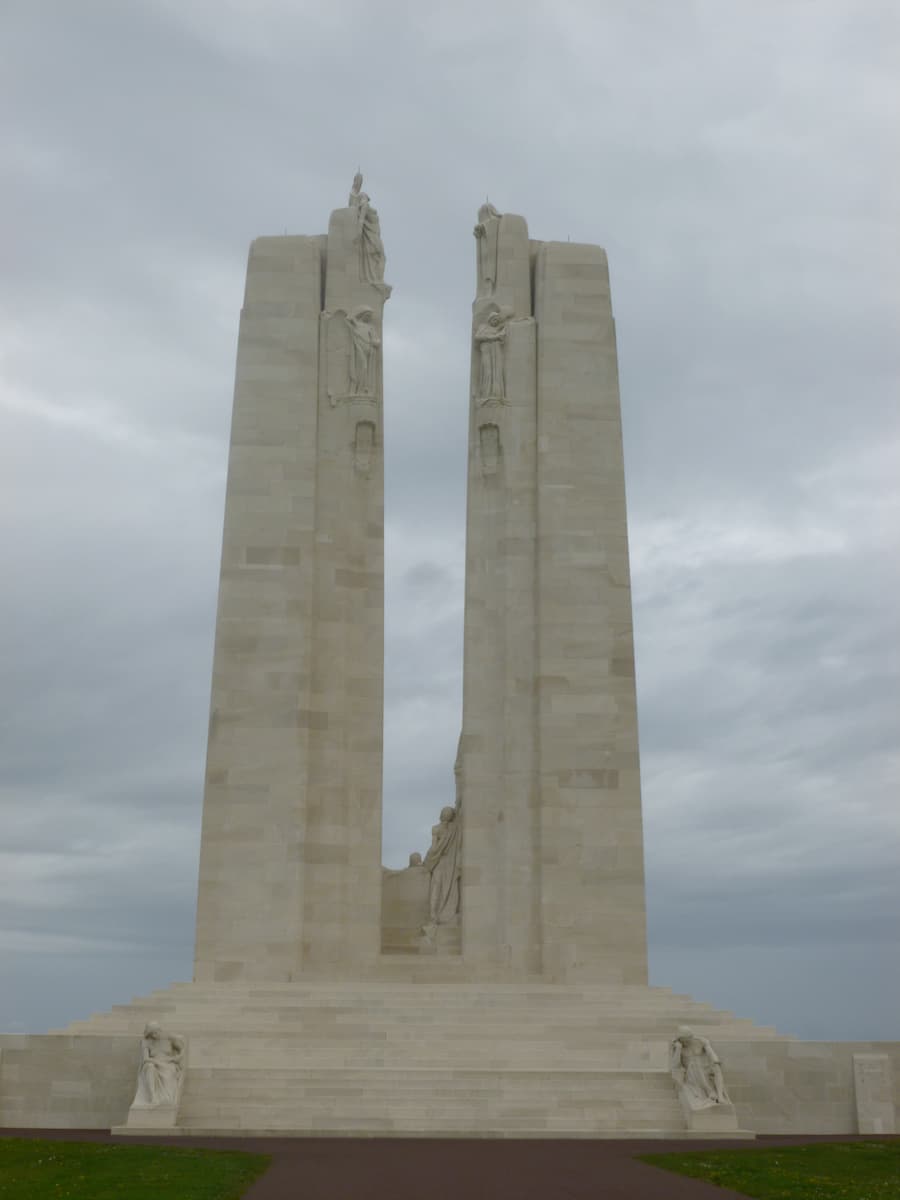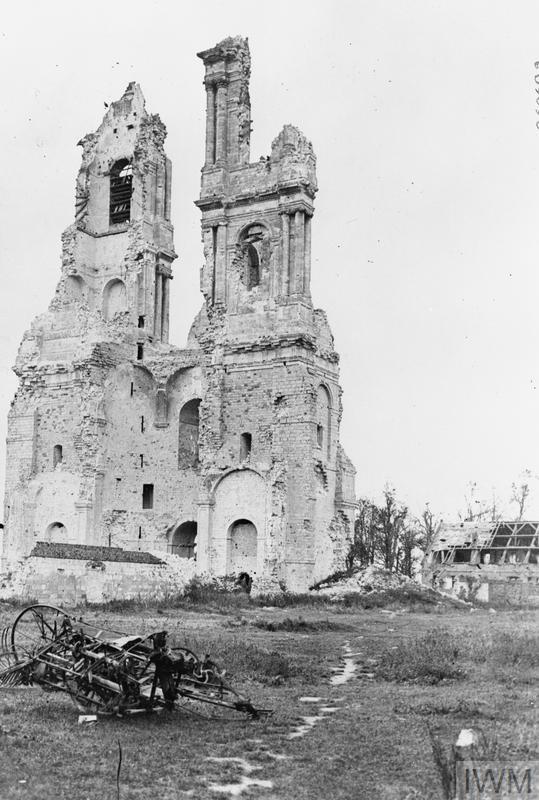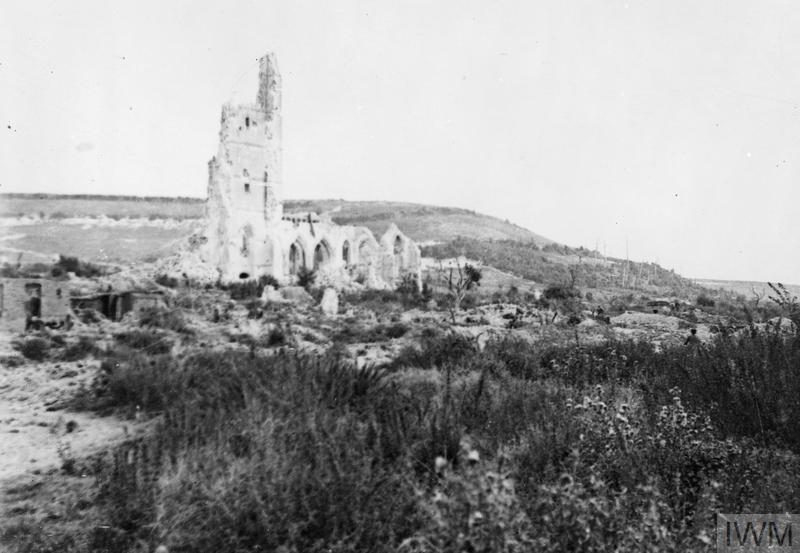A Ridge too Far
A poem from the archive
Like High Wood and Hill 70 before it, Vimy Ridge is forever associated with the heroic bravery and hubristic sacrifice of countless WWI battles to occupy the strategic high ground in what is the relatively flat and featureless fields of northern France. Today the Canadian Memorial to the 11,285 Canadians killed on French soil who have no known graves stands sentinel over the ridge and the pock-marked ground around it that was so bitterly fought over in April 1917.
Zems Zem’s poem ‘To the Vimy Ridge’ reflects on earlier struggles by the French and British to capture this strategic high point that dominates the mining town of Lens and the surrounding Douai plain. It was most likely written in September 1916, when “the thistle down is floating high” and “summers reign is almost oe’r”, shortly after the 9th Seaforths moved into new billets at Villiers-au-Bois, approximately 10km north-west of Arras on the western side of Vimy Ridge.
The ridge is a chalk escarpment approximately 7km in length and 60m high, rising to 145m at its highest point. It fell under German control in October 1914 as each side attempted to outflank the other during the so-called Race to the Sea. Rising gradually on its western side, where the Allies were entrenched in full view of the enemy, it drops more steeply on the eastern side, where the German artillery could fire up and over the ridge completely unmolested.
To the vimy ridge
On Vimy Ridge bright shines the sun,
The kestrels wheel in azure sky,
O’er desert fields with flowers filled
The thistledown is floating high.
The splintered tower of St Eloi [1],
Fantastic, huge, in ruin bare
From the dark wood which clothes its feet,
Sunsmitten, leaps into the air.
Bouvigny’s wood is fair to see
Her branches hung with autumn’s store
Her fluttering banners bravely green
Though summer’s reign is almost o’er.
The roofless walls of Carency
And wall-less floors of Souchez too [2],
Once full of bursting shells and smoke
Now bask in peace beneath the blue.
High on its hill in virgin white,
The church of Ablain brightly shines [3],
And smiles defiance to the ridge
Where run th’opposed entrenched lines [4].
The chalky mass of Vimy Ridge
Whalebacked and white in noonday heat,
Looks grimly down the valley there
To Ablain lying at its feet.
The heat haze shimmers o’er the fields
Where miles of thistles thickly grow
And bright with flowery cornices
The long meandering trenches go.
In Zouave valley, bathed in heat [5],
The regiments pass the weary day
And watch the high trench mortar bombs
Gyrate and twirl along their way.
Yet many thousand valiant men
Lie buried in these desert fields
And hundreds more shall silent lie
Before the stubborn Vimy yields [6].
Aeons ago, when all this land
Lay sunk beneath primeval seas,
Millions of creatures died to build
These chalky hills and flowery leas [7].
Each tiny atom as it died [8]
Here slowly through the water fell
And added to the slime beneath
The volume of its little shell.
The Brachiopod and Mollusc there,
The Crinoid and Echinoid too [9],
Dying, increased the mass of chalk
That later rose into the blue.
Of chalky hills, now fair to sight
With trees and flowers brightly gay,
Of deaths uncountable built up,
What are these deaths of yesterday?
The bones of Saxon and of Frenk [10],
Of all destroying Hun as well,
Into a little dust contract
Nor change the shape of hill or dell!
Man’s death is but a little thing
Small mark upon the land he leaves,
His shells scarce raise the level sod
His grave the surface hardly heaves.
Stern nature carries on her work
Nor feels she man’s afflictions pinch
Perhaps these thousands only die
To raise the Vimy Ridge an inch.
Zem Zem (undated)
[1] The twin towers of the ruined abbey at Mont St-Eloi provided a perfect artillery observation post and were heavily shelled as a consequence.
[2] Carency and Souchez are two villages to the west of Vimy Ridge that were captured by the French during the Second and Third Battles of Artois between May and September 1915.
[3] Ablain-Saint-Nazaire is a small village strategically located at the base of the Lorette Spur. German forces seized the village in October 1914 and the Allies spent the next 12 months trying to reclaim the ground and other nearby locations. Ablain-Saint-Nazaire was heavily shelled, leaving almost everything in ruins, including the 15th Century church.
[4] The French were relieved by the British XVII Corps in February 1916, by which time the opposing lines had solidified on the western slopes of Vimy Ridge, in some places only 50 metres apart.
[5] Zouave Valley was the name given by the British to the stretch of ground behind the trenches facing Vimy Ridge, in honour of the 1st Moroccan Division who managed to briefly capture the height of the ridge in May 1915 but were driven back owing to lack of support.
[6] In September 1916, when this poem was most likely written, Vimy Ridge was still in German hands. The British had suffered approximately 2500 casualties during a German counter-offensive in May 1916, dwarfed by the 150,000 French casualties lost in their attempts to take the ridge in 1915.
[7] During the Late Cretaceous, between 100 and 66 million ago, vast chalk deposits were laid down in this area, the same geological origins as the white cliffs of Dover. The chalky spoil from the trenches showed up very clearly when viewed from the air.
[8] The first decade of the 20th Century saw rapid advances in the understanding of atomic structures culminating in the Rutherford-Bohr model of the atom published in 1913. Zem Zem’s reference to the atom shows that he was clearly abreast of these developments.
[9] These small ocean floor dwelling creatures lived during the Cretaceous period and formed the chalk that we see today.
[10] Saxon in this context presumably meaning Anglo Saxon although the XII (1st Royal Saxon) Corps was a German Army unit recruited from Saxony and active on the Western Front, so it is possible that Zem Zem was acknowledging German casualties on the Ridge. That there is no mention of Canadian forces makes it almost certain that this poem was written before October 1916.
During 1915 the French made several attempts to dislodge the Germans and in May the 1st Moroccan Division managed to briefly capture the height of the ridge but were unable to hold on. A further attempt in September only captured the village of Souchez at the western base of the slope. The French were relieved in February 1916 by the British XVII Corps who soon discovered that German tunnelling companies had taken advantage of the relative calm over the winter of 1915/16 to build an extensive network of tunnels and mines from which they could attack British positions by setting off explosive charges underneath their trenches. On 21 May 1916, after shelling the British forward trenches and divisional artillery positions, the German infantry began Operation Schleswig Holstein, an attack along a 1,800m front. They captured several British-controlled tunnels and mine craters before halting their advance and digging in.
The second half of 1916 was relatively quiet in the Vimy Ridge sector, “Now bask in peace beneath the blue” as Zem Zem put it, whilst the Royal Engineers, assisted by 9th Seaforth Pioneers, made preparations for the 1917 spring offensive. The battalion diary for the first week of September 1916 gives a flavour of these activities:
A Coy reclaiming GOBRON TRENCH & constructing strong trench mortar emplacements
B Coy reclaiming TOTTENHAM ROAD, VINCENT STREET & reclaiming & maintaining WORTLEY & CENTRAL AVENUES
C Coy engaged on construction of light railway in ZOUAVE VALLEY.
D Coy Opening up new Boyan trench & working on maintenance of Boyan 1,2,3
The rather bland diary entry underplays how unpleasant this reclamation work could be, which involved clearing out the filth and detritus of almost two years of trench warfare and recovering thousands of unburied bodies – “the bones of Saxon and Frenk” as Zem Zem put it.
Once again we see a glimpse of Zem Zem’s own character through his poetry. We know from The Seaforth Alphabet that he considered himself an amateur zoologist (“Z is the zoologist, also M.O, who writes these ridiculous verses you know”), and he reveals the breadth of his general knowledge in describing how the chalk ridge was formed from the shells of “the Brachiopod and Mollusc there, the Crinoid and Echinoid too”. He mournfully contrasts the deaths of millions of creatures that over the Millenia built up the huge chalk ridge, with the unburied bodies of soldiers killed in various unsuccessful attempts to capture it: “His shells scarce raise the level sod, his grave the surface hardly heaves”.
The Canadian Corps relieved the British along the western slopes of Vimy Ridge in October 1916 and the 9th Seaforths were pulled back to Averdoignt. After months of training, tunnelling and laying mines, the four Canadian divisions stormed the ridge at 5:30am on 9 April 1917. More than 15,000 Canadian infantry overran the Germans all along the front. Hill 145, the highest and most important feature of the Ridge, and where the Vimy monument now stands, was captured in a frontal bayonet charge against machine-gun positions. After three days of heavy fighting, the Ridge was in Allied hands. But it was victory at a heavy cost: 3,598 Canadians were killed and another 7,000 wounded.
Hundreds of books and articles have been written about Vimy Ridge in the years since to create a paper mound to rival the geological one. Now, like each little Brachiopod shell that contributed to this famous chalk ridge, Zem Zem’s poem is added to the literary pile.
By Craig Durham, volunteer at The Highlanders’ Museum (Queen’s Own Highlanders Collection)




